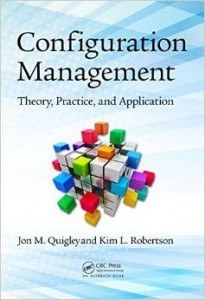Kim Robertson started his first company at the age of 18 and has an extensive background spanning forty years in all aspects of business and aerospace. He is the author of over 100 discipline specific training packages, 3 fiction books and articles for CM Trends and various other trade publications from industrial arts to Configuration Management. His latest collaboration Configuration Management: Theory, Practice, and Application is available for pre-order on Amazon.com.  Contact Kim through LinkedIn or Kim.Robertsonatvaluetransformdotcom.
Contact Kim through LinkedIn or Kim.Robertsonatvaluetransformdotcom.
Kim is the guest on the Business901 podcast tomorrow.
Joe: A lot of people want to control their own data. They want control of it. They’re generating it, and can they have ownership. Is that ever really going to be feasible?
Kim: It depends on how you define that thing that you’re trying to control. I’ll give you an example. I have intellectual property that I feel is mine which may be photographs of family; it may be the types of things that you would share with people on your Christmas card and that sort of thing. If you are putting that information on Facebook for example, I believe a clause is still in the Facebook use agreement that as soon as you post something, Facebook can use that information anyway they want to including sell it to somebody else. So once you do that and sign up for that agreement, you have lost control of your personal IP. When it comes to things like patented technologies and trademark type technologies, countries have different ways of looking at it. For example, some companies say, we don’t care who built this IC chip; we’ll give a patent to every new application for it. So if you originally built it for a cell phone and now all of a sudden somebody has it saying, oh we’ll use that same technology for your garage door opener so you can open your garage from your cell phone; that would be two patents.
Once we get to some sort of international standard for what that IP means worldwide, it’s going to be a lot easier to protect it. Right now, you’ll find it’s kind of anybody’s game but it has been for years. Back in antiquity, for example, intellectual property and data encryption took different forms. There is historical records of this fellow who wanted to get information about a city out to the people that were going to invade the city, and so he had some trusted servants and he shaved their heads and he tattooed the instructions on their heads, let their hard grow and sent them out. It was a very early form of IP security. In Sumner, they used to have little clay balls that they put tokens inside. In the token maybe here’s three measures of wheat, two measures of metal, and four measures of beer, and once those were put inside the clay ball and both people’s seals were put on it, that was a binding protected piece of IP until that clay ball was broken. You could say, oh okay, you’re Fred, you’ve worked for me a week, so you want me to pay you your metal and your wheat and your beer.
The idea, that all of this is new, is not true; it’s just become more critical as we reach the population densities that we have. It was much easier to control when your nearest neighbor was 20 miles away. Now that your nearest neighbor is nano-seconds away in the electronic world, it gets very hard to control. I don’t think we’re ever going to really get there. I think that we’re making great strides, but a lot of that is based on trust, and some of the problems we find is based upon different definitions of what IP really is. For example in the US, we say we patented this design wherever you use it. In Japan they say, we patented this usage of that design, whatever it is. So, of course, there’s going to be disconnects until we come to a common language.
Lean Sales and Marketing: Learn about using CAP-Do
